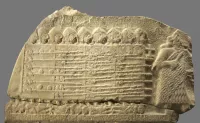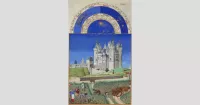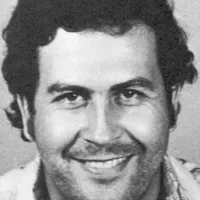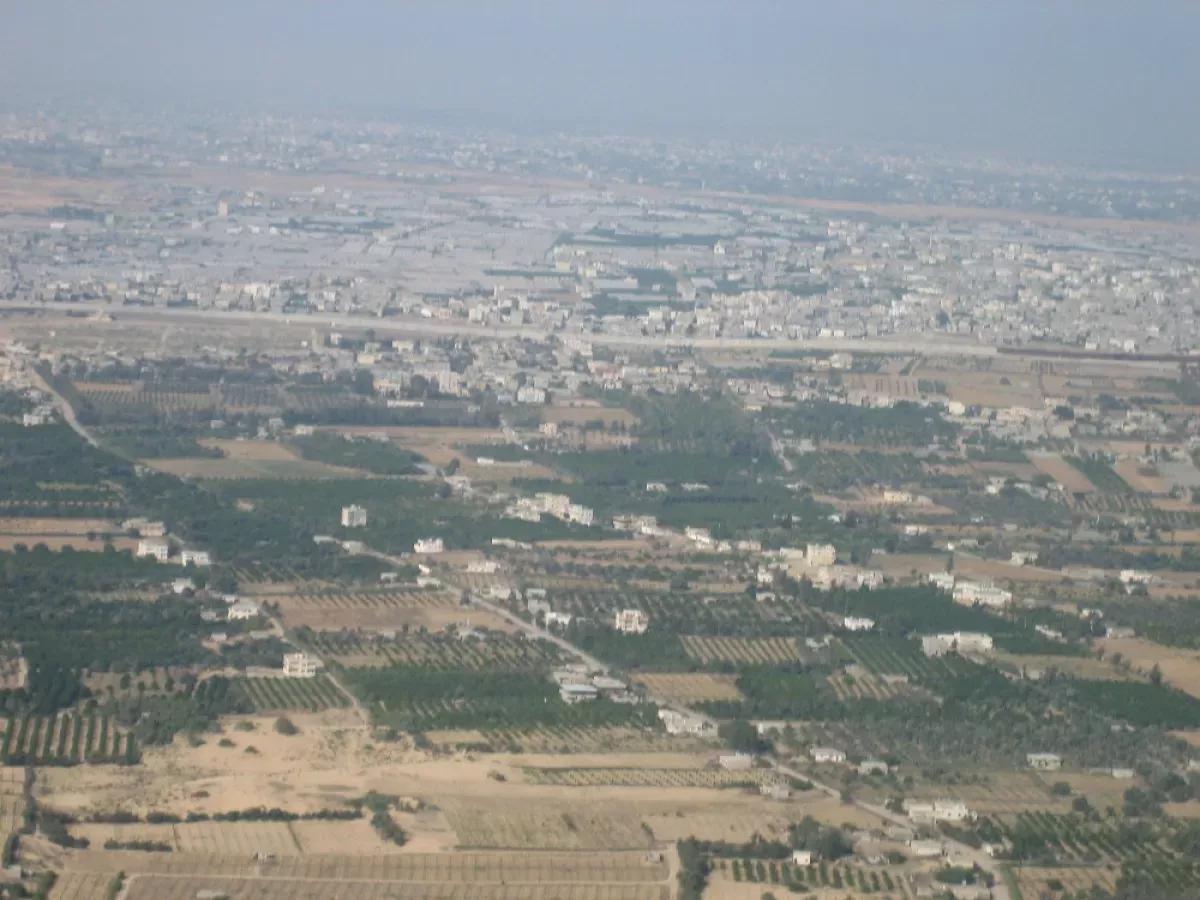Rafah, a Palestinian city and capital of the Rafah Governorate in the southern Gaza Strip, had a population of 171,889 in 2017. Located 30 kilometers southwest of Gaza City, Rafah has become a shelter for an estimated 1.4 million people displaced by the Israel-Hamas war as of February 2024, following extensive bombardment and ground offensives in Gaza City and Khan Yunis by Israel.
October 1906: Establishment of the Ottoman-British Boundary
The Ottoman–British agreement of October 1, 1906, established a boundary between Ottoman-ruled Palestine and British-ruled Egypt, running from Taba to Rafah.
1906: Rafah's Growth Unhindered by Boundaries
After the Armistice Agreement, Rafah was able to grow without the constraints of the old 1906 international boundary.
1917: British Capture of Rafah
In 1917, the British army captured Rafah and established it as a base for their attack on Gaza. The presence of army bases attracted people back to the city.
1922: Rafah's Population at 599
In 1922, Rafah's population was recorded as 599.
1922: Population Census of Rafah
The 1922 census of Palestine conducted by the British Mandate authorities recorded a population of 599 inhabitants in Rafah, all of whom were Muslim.
1931: Population Census of Rafah
In the 1931 census, Rafah's population increased to 1,423, all Muslims, residing in 228 houses.
1931: Rafah's Population Increases to 1,423
Rafah's population increased to 1,423 in 1931.
1938: Rafah's Population Reaches 1,635
The population of Rafah further increased to 1,635 in 1938.
1945: Land and Population Survey of Rafah
According to a 1945 official land and population survey, Rafah had a population of 2,220, all Muslims, with 40,579 dunams of land. This included 275 dunams for plantations and irrigable land, 24,173 dunams for cereal cultivation, and 16,131 dunams of uncultivable land.
1945: Rafah's Population Climbs to 2,220
By 1945, Rafah's population had reached 2,220.
1948: Egyptian Governance and Establishment of Refugee Camps
Following the 1948 Arab-Israeli War, Egypt assumed governance of the area, establishing refugee camps in Rafah.
1948: Establishment of Palestinian Refugee Camps in Rafah
Following the 1948 Palestine War, Egypt took control of the area and established refugee camps in Rafah for displaced Palestinians.
February 1949: Egypt Occupies Gaza and Rafah
Following the Armistice Agreement of February 24, 1949, Rafah became part of Egypt-occupied Gaza, eliminating the Gaza-Egypt border.
1956: The Rafah Massacre
During the 1956 Suez Crisis, the Israeli military killed 111 Palestinians, including 103 refugees, in the Rafah camp during the Rafah Massacre.
June 1967: Destruction in Rafah Refugee Camp
On June 9, 1967, the Israeli army bulldozed and destroyed 144 houses in the Rafah refugee camp, resulting in the death of 23 inhabitants.
1971: IDF demolishes homes in Rafah refugee camps
In 1971, the IDF, under General Ariel Sharon, demolished approximately 500 houses in the Rafah refugee camps to create patrol roads, displacing nearly 4,000 people.
1978: Relocation of Canada project refugees
After the 1978 Camp David Accords, refugees from the Canada housing project were relocated to the Gaza Strip, and the Tel al-Sultan project was built to accommodate them.
1979: Division of Rafah and Return of Sinai to Egypt
The 1979 peace treaty between Israel and Egypt returned the Sinai Peninsula to Egyptian control, redrawing the Gaza-Egypt border through Rafah. This divided the city into Egyptian and Palestinian parts, separating families and dividing properties. Many houses and orchards were destroyed to create a buffer zone, allegedly for security reasons.
1982: Rafah's Population Reaches 10,800
In 1982, Rafah had a total population of approximately 10,800.
1982: Division of Rafah and Creation of Buffer Zone
When Israel withdrew from the Sinai Peninsula in 1982, Rafah was divided into a Gazan part and an Egyptian part, separating families by barbed-wire barriers. The core of the city was destroyed by both Israel and Egypt to create a large buffer zone.
April 1989: Killing of Khaled Musa Armilat
On April 25, 1989, during the First Intifada, 22-year-old Rafah resident Khaled Musa Armilat was shot dead by Israeli soldiers in Khan Yunis.
March 1990: Investigation into the death of Khaled Musa Armilat
In March 1990, Defence Minister Yitzhak Rabin stated that the death of Khaled Musa Armilat was under investigation by the Israeli Police, with conflicting accounts of who was responsible.
1997: Population Census of Rafah
According to the 1997 Palestinian Central Bureau of Statistics (PCBS) census, Rafah and its adjacent camp had a combined population of 91,181, while Tall as-Sultan had a population of 17,141. Refugees constituted 80.3% of the total population, with a gender distribution of 50.5% male and 49.5% female.
1998: Operation of Yasar Arafat International Airport
Gaza's only airport, Yasar Arafat International Airport, located south of Rafah, began operations in 1998.
2001: Destruction of Yasar Arafat International Airport
In 2001, the Israeli military bombed and bulldozed Yasar Arafat International Airport, ceasing its operations.
May 2004: Approval of mass demolition of homes in Rafah
In May 2004, the Israeli Government, led by Prime Minister Ariel Sharon, approved another mass demolition of homes in Rafah.
September 2005: Israel withdraws from Gaza Strip, Rafah remains divided
In September 2005, Israel withdrew from the Gaza Strip, but Rafah remained divided, with part of it under Egyptian rule. This division led to the creation of smuggling tunnels under the border.
September 2005: Control of Rafah Border Crossing transferred to Palestinian Authority
In September 2005, control of the Rafah Border Crossing was transferred to the Palestinian Authority as part of the Israeli withdrawal from the Gaza Strip.
November 2005: EU begins monitoring Rafah Border Crossing
A European Union commission began monitoring the Rafah Border Crossing in November 2005 amid Israeli security concerns. Egypt and Israel signed an agreement regarding the border.
April 2006: Palestinian Authority assumes responsibility for Rafah Border Crossing
In April 2006, Mahmoud Abbas's Presidential Guard assumed responsibility for the Palestinian Authority side of the Rafah Border Crossing.
2006: Population Estimate for Rafah
In the 2006 PCBS estimate, Rafah city had a population of 71,003, while Rafah camp and Tall as-Sultan were listed as separate localities with populations of 59,983 and 24,418, respectively.
2017: Rafah's Population Reaches 171,889
In 2017, Rafah had a population of 171,889.
December 2023: Civilians flee to Rafah during IDF war on Gaza
During the IDF's war on Gaza in December 2023, civilians were told to flee to Rafah, which the Israeli government declared a safe zone, despite extensive bombing in the region.
February 2024: Massive Displacement of Palestinians to Rafah
As a result of the massive bombardment and ground assaults in Gaza City and Khan Yunis by Israel during the Israel–Hamas war in February 2024, about 1.4 million people sought refuge in Rafah.
February 2024: Mass displacement to Rafah and potential for ground invasion
By February 2024, roughly two-thirds of Gaza's population had been displaced to Rafah. The IDF declared its intent to enter the city, raising concerns about potential mass civilian casualties.
Mentioned in this timeline
Canada is a North American country the second largest in...
Israel located in the Southern Levant region of West Asia...

War is defined as an armed conflict involving the organized...

Camp David is a secluded retreat for the U S...

September is the ninth month of the year in the...
Trending

2 months ago Virginia Vallejo, Pablo Escobar's ex, reveals health struggle: Suffered a brutal stroke.

7 months ago Jake Gyllenhaal's 'Othello' Snubbed by Tony Awards Despite Box Office Success with Denzel Washington.
8 days ago World Cup 2026 Draw: Brazil in Group C, France's Path

Maisie Williams is an English actress who gained widespread recognition for her role as Arya Stark in the HBO series...

2 months ago Dakota Johnson's Epic Response to 'Naked Dress' Queries and Red Carpet Fashion
21 days ago SpaceX Falcon 9 Launches Starlink Satellites from Cape Canaveral on 150th Mission.
Popular

Candace Owens is an American conservative political commentator and author...

Ilhan Omar is an American politician currently serving as the...

XXXTentacion born Jahseh Dwayne Ricardo Onfroy was a controversial yet...

Tom Cotton is an American politician and Army veteran currently...

Kelsey Grammer is an accomplished American actor producer and singer...
The Kennedy Center Honors are annual awards recognizing individuals and...
